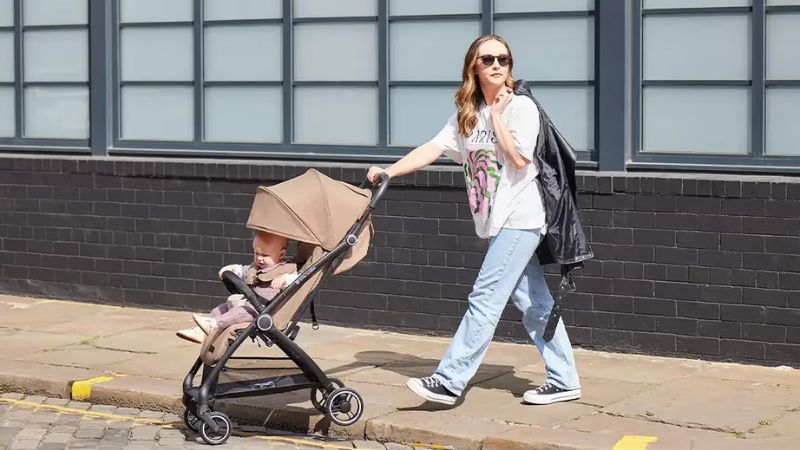Some parents hold on to the same stroller far longer than they should. They may not realise that their child’s needs change quickly as they grow. The idea of upgrading might not even cross their minds until problems begin to show.
Using the same stroller for too long can lead to more than just a bumpy ride. It can impact safety, comfort, and how smoothly everyday outings go for both parent and child. A stroller that once worked perfectly might now make trips harder, often without anyone noticing.
That’s why it’s helpful to recognise the signs that it may be time for an upgrade. Paying attention to changes in your child or the stroller can save time, reduce frustration, and make outings much more manageable. Here’s what to watch for and why it matters.
Table of Contents
Physical Signs from the Child
As your child grows, the stroller must accommodate their increasing size. If their feet drag, their head brushes against the canopy, or the seat feels cramped, it’s a clear signal that the stroller may no longer fit. These issues can lead to discomfort and raise safety concerns, which are strong reasons to consider an upgrade.
Observe how your child behaves during rides. Fussing, leaning awkwardly, or slumping may indicate discomfort or restricted movement. If the straps no longer fasten properly or keep slipping off the shoulders, it’s a sign that the stroller no longer suits the child’s needs.
When browsing the strollers here at Maxi Cosi, many parents realise that their current model no longer supports their growing child. A well-fitted stroller should allow your child to sit comfortably and securely, without forcing unnatural positions. Prioritising comfort can make family outings smoother and more enjoyable for everyone.
Wear and Tear on the Stroller
Just because a stroller still rolls doesn’t mean it’s functioning well. Loose wheels, squeaky joints, or a wobbly handle are signs of wear that shouldn’t be ignored. These minor issues often turn into more serious problems over time.
Pay attention to how the stroller feels when you push it. It may no longer be safe if it pulls to one side, shakes, or feels uneven. A weakened frame or rusted joints can indicate it’s well past its prime.
Check the fabric, buckles, and straps too. Worn padding, cracked plastic, or frayed harnesses don’t just look untidy; they also compromise comfort and safety. A stroller should feel solid and reliable every time you take it out.
Safety and Feature Limitations
Older strollers may lack essential safety features that are now standard. In the past, some models didn’t include five-point harnesses, easy-lock foot brakes, or full-coverage sunshades. Sticking with an outdated design might mean missing out on modern conveniences that make daily life easier and safer.
If the stroller doesn’t stay securely locked when folded or tips easily while turning, that’s a red flag. A dependable stroller should remain stable on various surfaces—especially as your child grows heavier and more active.
It’s also worth checking whether the stroller’s functions are still practical. If folding it down is time-consuming or the under-seat basket no longer fits everyday items, your stroller might not meet your current needs. In that case, a model that better supports your day-to-day routine is worth considering.
Lifestyle and Family Changes
Your lifestyle evolves, and your stroller should evolve with it. You may now walk longer distances, get in and out of cars more frequently, or manoeuvre through tighter spaces. If your current stroller feels bulky or hard to handle, it can slow you down and add unnecessary effort.
A lightweight, more agile stroller can make a noticeable difference in fast-paced settings. Parents who travel more often or rely on public transport find that compact designs save time and energy.
Adding a second child to the family also changes what you need in a stroller. Double strollers, ride-on attachments, or larger storage options suddenly become essential. Instead of juggling multiple items, upgrading to a more suitable model can simplify life significantly.
Convenience and Comfort Improvements
Today’s strollers are designed with modern challenges in mind. They fold more easily, steer more smoothly, and offer better storage. These features aren’t just fancy extras; they solve real issues parents face daily.
Heavy lifting and awkward folding shouldn’t be part of your routine. A well-designed stroller can protect your back and reduce the strain of loading and unloading from the car. It also makes quick errands far less stressful.
Enhanced features such as larger baskets, adjustable handlebars, cup holders, or one-hand recline mechanisms make a real difference. These updates help transform a basic stroller into a tool that keeps up with your life. Even minor improvements can change your day, especially when you’re in a rush.
If you’re exploring new strollers here, remember how much your daily rhythm has changed since you first bought your current model. What once worked may no longer suit your family’s pace or needs.
Final Words
It’s not always obvious when a stroller has reached the end of its useful life, but the signs are there if you pay attention. If your child seems uncomfortable or pushing the stroller feels more work than it should, it might be time to upgrade.
The right stroller doesn’t just transport your child—it supports your lifestyle. Making a well-timed switch can mean fewer struggles and more moments to enjoy together on the go.



